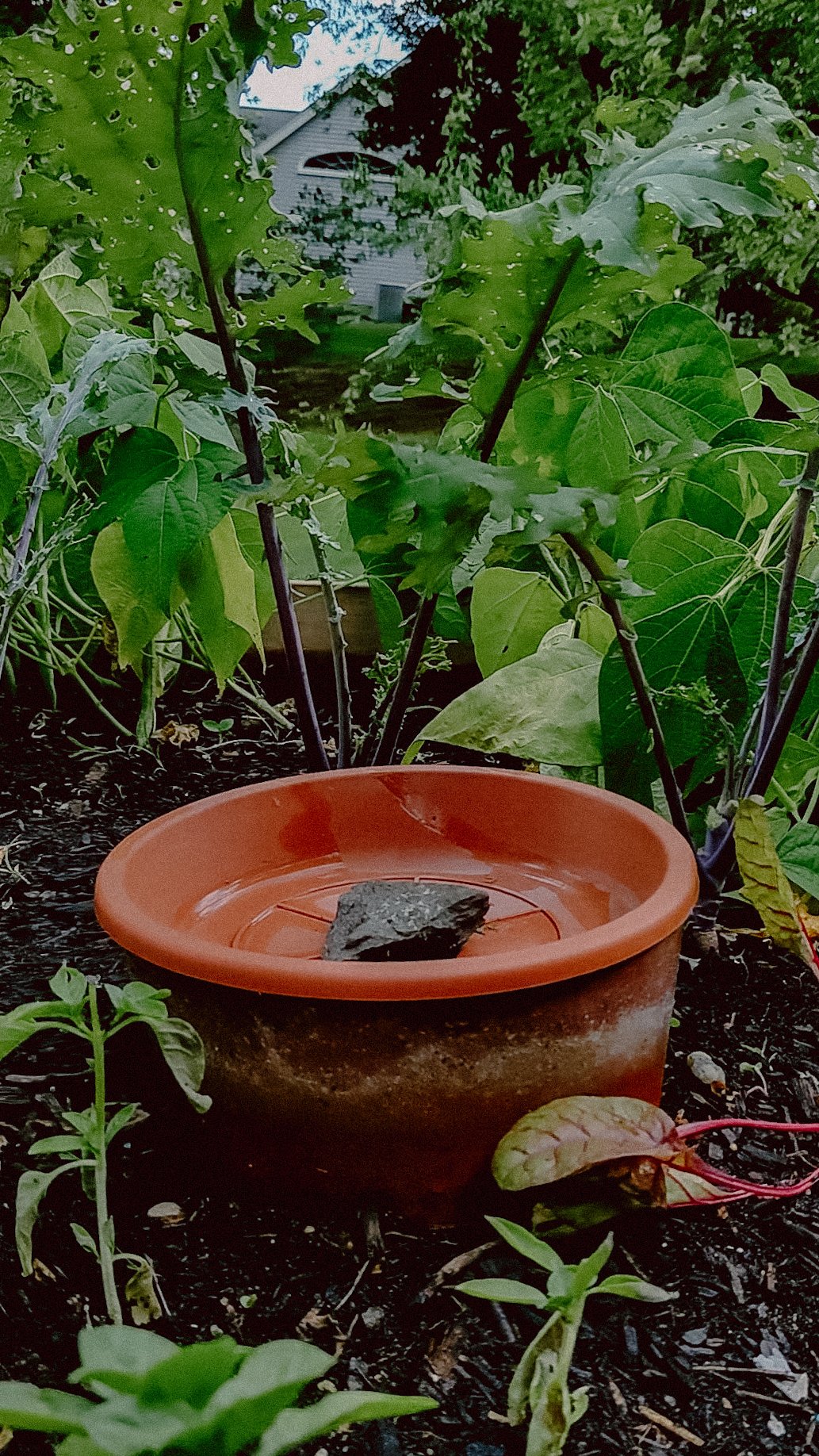Comparing Olla Pots vs. Other Watering Systems: Which is Right for You?
The Cottage Peach is reader-supported. When you purchase through links on our site, we may earn an affiliate commission at no additional cost to you. All opinions are our own.
It's safe to say that there is no one right way to water your garden. But if you're trying to make a decision about what watering system to use, I'd like to introduce my favorite - the olla watering system. Of course, every system has it's own unique benefits and potential drawbacks, so what makes ollas better than drip irrigation, soaker hoses, and traditional watering cans? At the end of the day, your decision should be based on factors such as water efficiency, ease of use, cost, and suitability for different plant types and garden sizes. But speaking as a long-time gardener who's tried them all and is always looking for ways to make gardening easier for people with physical limitations, limited time or energy, nothing even comes close to the accessibility of ollas. The best part is you can DIY them yourself, or get a ready to go kit for your garden. Still not convinced? Let me explain why ollas are so great.
Pros of using an olla watering system
These unglazed clay pots are buried in the ground near plants, releasing water slowly through their porous walls. They are highly water-efficient, reducing evaporation and minimizing water waste (see below for more info on that). Plus, they are low maintenance, requiring infrequent refills. They also promote healthy root growth by providing a consistent moisture source.
Cons of using an olla watering system
Ollas have a limited coverage area of about two feet around the olla in all directions so you'll need more of them for a larger space. While they work in any type of soil, they won't be ideal for sandy soils, which drain quickly. Ollas can be fragile, and take up in ground planting space in the garden.
Pros of using Drip Irrigation
Drop irrigation uses a network of tubes and emitters to deliver water directly to plant roots. It is extremely water-efficient, minimizing evaporation and runoff. You can customize drip irrigation to suit various garden layouts and plant needs and it can be automated with timers for convenience whether you are away on vacation or just busy with other things.
Cons of using Drip Irrigation
Drip irrigation has a much higher upfront cost than ollas and installation complexity. You may need a professional to help you install it and it requires regular maintenance to prevent clogs and leaks. Drip irrigation may not be suitable for all soil types.
Pros of using Soaker Hoses
Porous soaker hoses release water slowly along their length, saturating the surrounding soil. It's an efficient water delivery method with minimal evaporation, easy to install and use, affordable and widely available.
Cons of using Soaker Hoses
Less precise water placement compared to drip irrigation. Can lead to overwatering if not monitored carefully. Not ideal for windy conditions, which can accelerate evaporation.
Pros of using Traditional Watering Cans
Hand-held containers like watering cans can be used to pour water directly onto plants. Watering cans are simple, inexpensive, and readily available, and offers control over water placement and quantity. Suitable for small gardens and container plants.
Cons of using Traditional Watering Cans
This method is time-consuming and labor-intensive. The chances of overwatering and inconsistent moisture levels are high. Can contribute to soil erosion and foliar diseases since the leaves are more likely to get wet.
Choosing the Right System
The best watering system for you will depend on several factors. Olla pots and watering cans are better suited for small gardens and container plants, while drip irrigation and soaker hoses are more efficient for larger areas. Consider the water needs of your specific plants. Some may thrive with the consistent moisture provided by olla pots, while others may prefer the deep watering of soaker hoses. Sandy soils may not be ideal for olla pots, as they drain quickly. Drip irrigation and soaker hoses are generally more versatile for different soil types. Olla pots and watering cans are typically more affordable upfront, while drip irrigation systems may require a larger initial investment. If you're looking for a low-maintenance solution, olla pots and drip irrigation with timers may be ideal. Watering cans and soaker hoses require more hands-on involvement.
WHAT IS AN OLLA WATERING SYSTEM?
Olla (pronounced oya) means “pot” in Spanish, but the concept of using ollas as an irrigation system goes back thousands of years and has been used in countless cultures around the world. An olla watering system is basically an unglazed eight to ten inch terracotta pot that is buried beneath the soil with only a small amount sticking up above the surface and filled with water. The water then leeches out of tiny holes or “pores” in the unglazed clay and is pulled through the soil to the roots of your thirsty plants using a process called soil moisture tension. This functions much the same way as osmosis, in that the water is trying to equalize to a certain level of moisture within the soil. This means your soil will never become overwatered either - if the soil is moist, the water stays in the pot until it is needed. The downsides of DIYing a system like this are that it can be hard to identify true terracotta - and other types of clays have different properties that make them not as well suited for this job. Plus, you have to fill each one manually every 2-5 days depending on how hot it is and most importantly they take up a lot of room in the garden beds. But thankfully, with the Thirsty Earth system all of those cons are eliminated.
WHY SHOULD YOU USE A Thirsty Earth OLLA WATERING System?
Hauling around a watering can and standing with a hose for 45 minutes isn't exactly a walk in the park for everyone, especially folks like me with arthritis. This past spring, I was right in the middle of a flare-up when I planted my garden. I knew I needed a way to water my plants without turning myself into a pretzel!
Imagine this: you water your plants, but most of the water just sits on top and bakes away in the sun. olla watering systems stop that waste! The water seeps out of the pot slowly, right where your plants need it most - at their roots. This fancy trick can slash your water use by up to 61%. Less water wasted means a lighter water bill and a happier planet.
Olla watering systems aren't just about saving water, they're also all about growing healthy plants! Since the water seeps out underground, plant roots stretch out searching for that moisture. This makes them stronger and helps your plants stand tall. Olla watering systems also keep the leaves of your plants dry, making it harder for fungus and disease to spread. And the slow release of water means your plants get the perfect amount to drink, never too much.
Basically, olla watering systems create happy, healthy plants that can take on anything. But, each olla can only cover an area of about 2 feet all around it (depending on the system you use, but this is true for the ThirstyEarth ollas). So depending on the size and shape of your garden, you'll need to keep this in mind when choosing your olla placement.
Thirsty Earth Olla Watering System Review
Since it can be hard to find genuine terracotta pots affordably in your area, and they take up a lot of space in the garden, the Thirsty Earth olla watering system can be a good compromise that allows you to actually hook up your ollas to an automatic rainwater harvesting system that will continuously refill your ollas for you on it’s own from free rainwater collected from your roof. Plus they are about the size of a water bottle, so they don’t waste precious planting space. I added the Thirsty Earth system to two of my raised beds, and since the system is super easy to customize to whatever garden bed configuration you have, you don’t have to worry about not having the right parts or enough pieces to get it done. The website does a great job of showing you exactly how to lay out the cotta cups and it’s made an already pretty hands-off system completely self-sustaining; water is collected from my roof into a 50 gallon barrel, flows automatically into reservoirs and down the irrigation tube into individual terracotta cups. Setup is easy thanks to the push to connect fittings that come with every kit. You just lay out your cups, cut the included tubing to size and connect everything with the fittings. No need to understand plumbing or any special building skills and you won't need any special tools either. Once everything is set up, you can leave it all summer and the reservoir will refill automatically from your rain barrel or you can manually refill it about once a week. I know it sounds too good to be true, but it really is that easy.
Other posts in this olla watering system series:
DIY OLLA WATERING SYSTEM INSTRUCTIONS
OLLA POTS FOR CONTAINER GARDENING
TROUBLESHOOTING OLLA POT PROBLEMS



